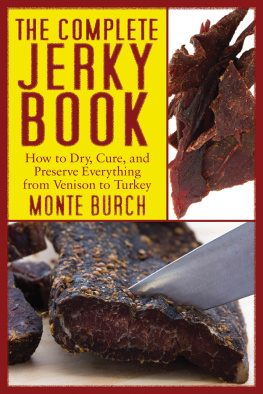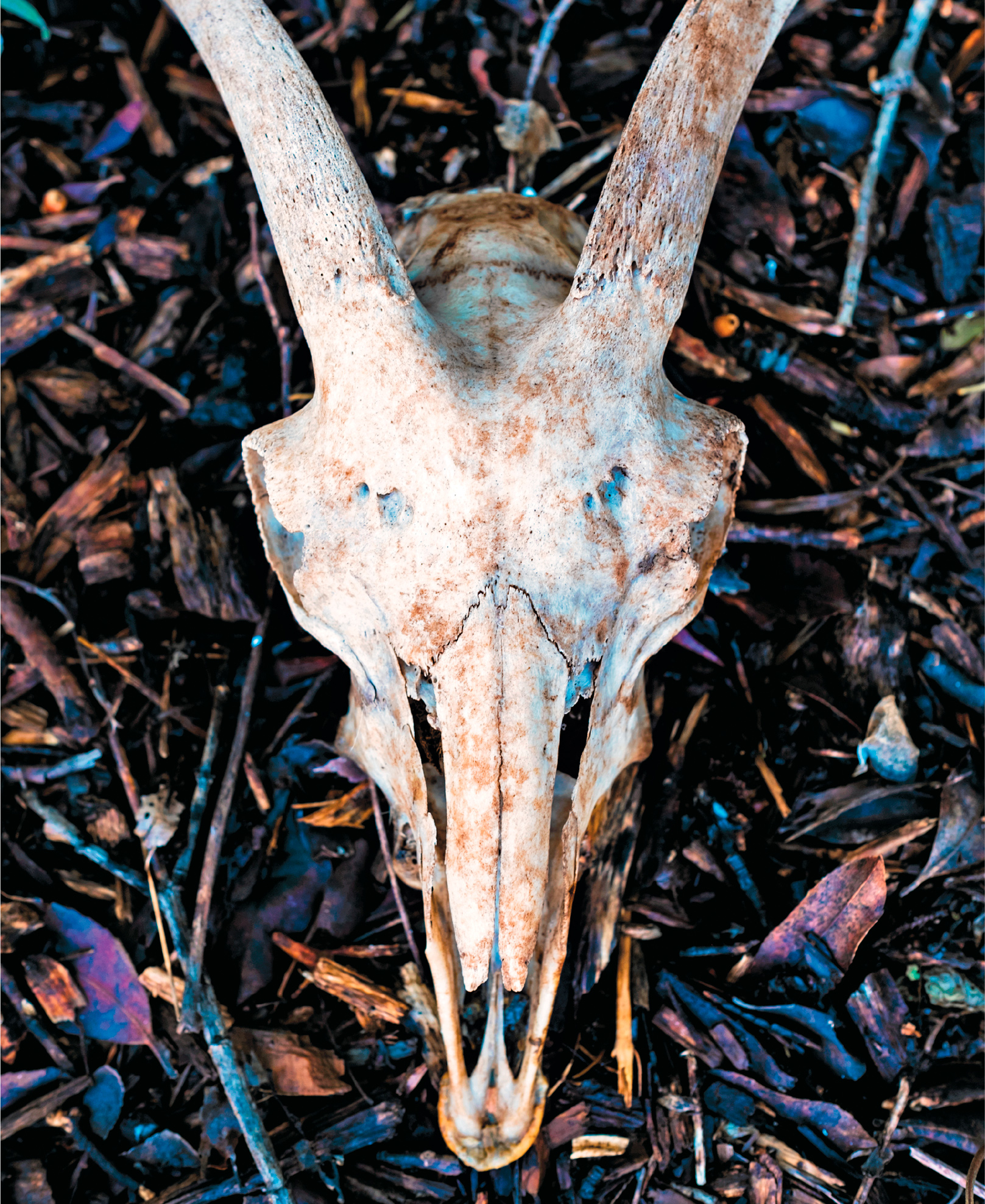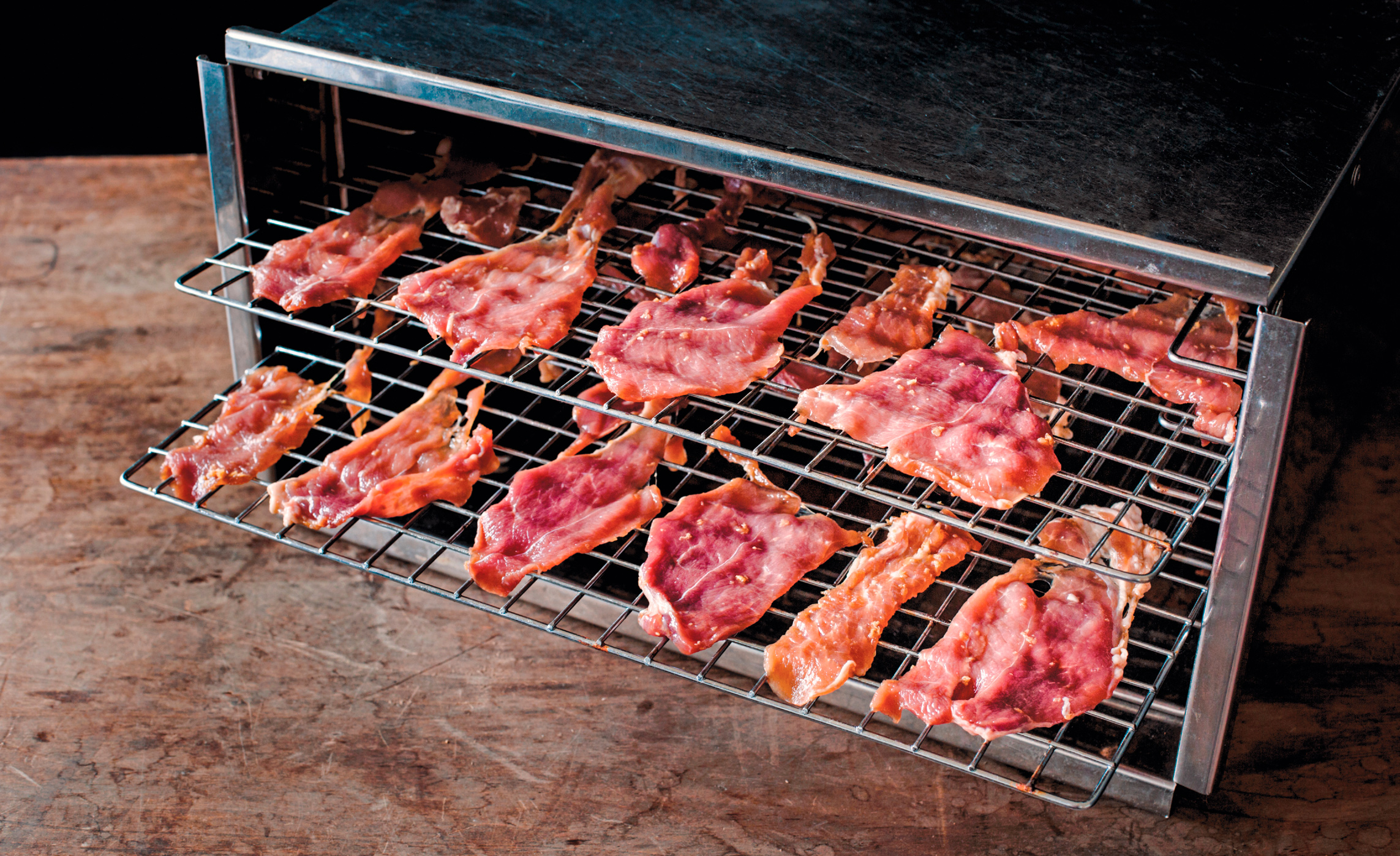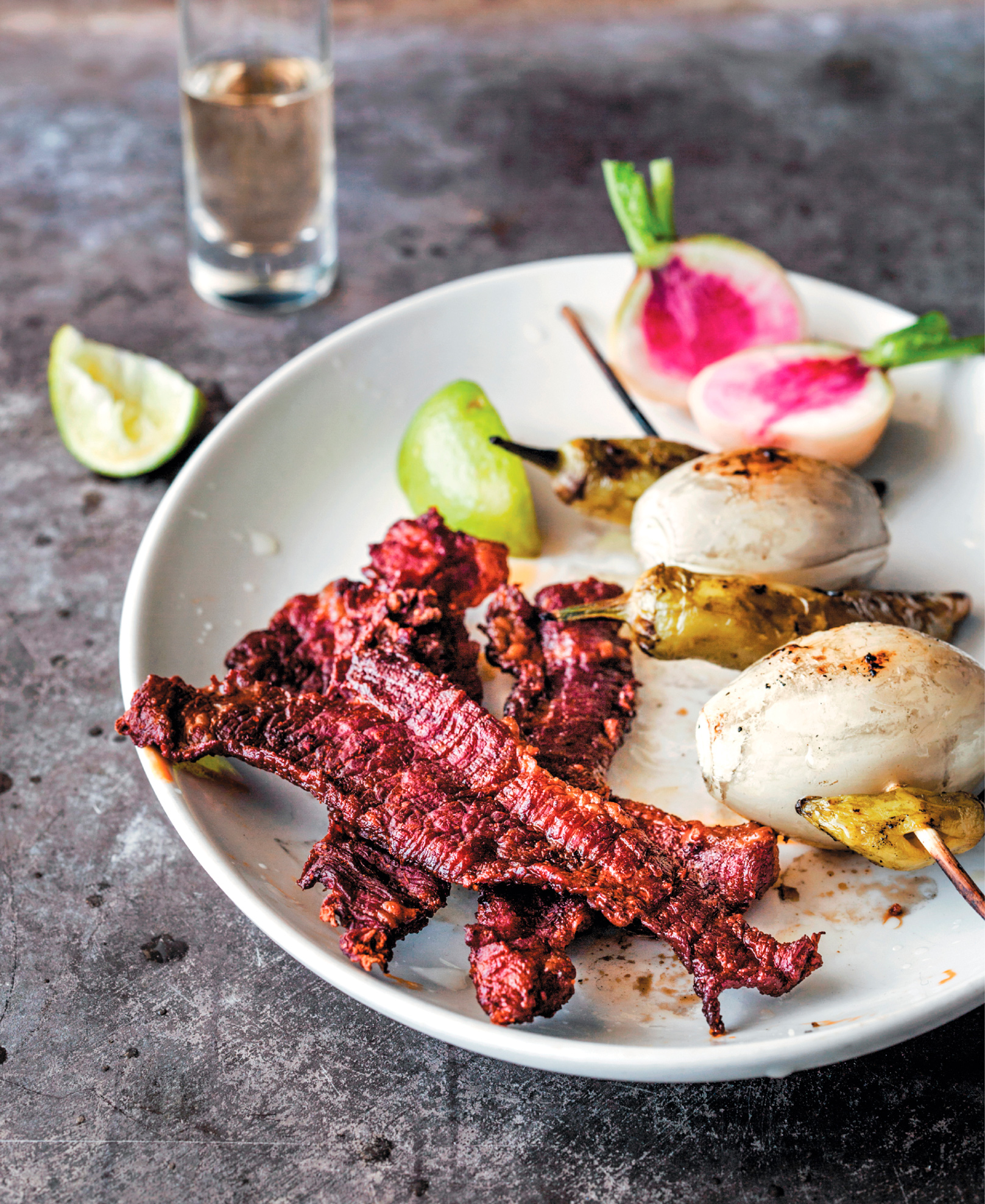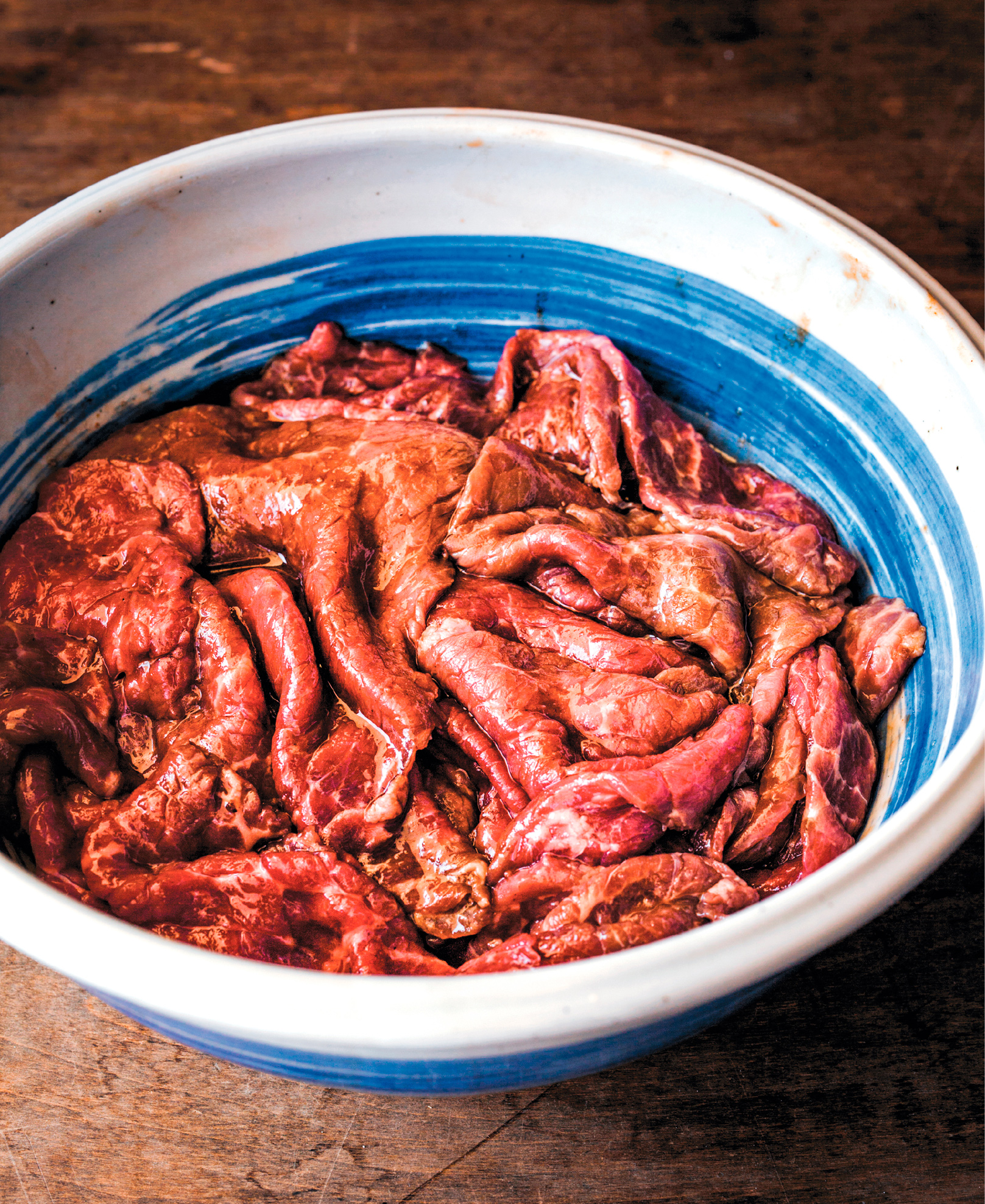ACKNOWLEDGMENTS
We feel pretty lucky that occasionally our workday consists of spending time with each other, dreaming up delicious meaty goods, cooking at home with the stereo blasting, and sitting by the fire, watching the magic of jerky happen.
One could not have asked for a more supportive crew than Team Jerky, led by our most enthusiastic editor, Emily Timberlake, with technical support from Anne Goldberg and the keen eye of Angelina Cheney. Their work, along with the occasional wise anecdote from Aaron Wehner, and the helpful prodding of our agent Katherine Cowles, kept the wheels on the cart.
As much as we adore jerky, we will be the first to admit that it isnt the most photogenic subject matter. Yet, Ed Anderson managed to capture its most mouthwatering, primal essence in his gorgeous photographs.
There is an extraordinary network of farmers, ranchers, and processors that work unbelievably hard to help us bring good food to the table. We could not have made this book without the people from Heritage Foods U.S.A., Five Dot Ranch, Richards Grassfed, Paradise Locker Meats, McCormack Ranch, Riverdog Farm, Broken Arrow Ranch, Liberty Duck, Mariquita Farm, and more.
We are incredibly grateful to our Fatted Calf family. Ren Rossini loaned us her moms old dehydrator when ours unexpectedly retired, Peter Chenaux and Lody Gonzalez dealt with all of our oddball meat requests, Bailie kept the house in order, and everyone provided invaluable feedback and made sure no jerky went to waste while we were recipe testing this book.
Sean Smith, our dear friend, we miss you terribly. We promise to keep Sho Sho, Scarlet, and Magenta well fed.
Promote peace, preach love, and make jerky forever!
RESOURCES
MEATS
Broken Arrow Ranch
brokenarrowranch.com
(800) 962-4263
Fatted Calf Charcuterie
fattedcalf.com
Napa, CA
(707) 256-3684
San Francisco, CA
(415) 400-5614
Heritage Foods USA
heritagefoodsusa.com
(718) 389-0985
NorthStar Bison
northstarbison.com
(888) 295-6332
Paradise Locker Meats
paradisemeats.com
(816) 370-MEAT
SEASONINGS AND SPECIALTY INGREDIENTS
Rancho Gordo New World Specialty Food
ranchogordo.com
(800) 599-8323
Whole Spice
wholespice.com
(707) 778-1750
Wine Forest Wild Foods
wineforest.com
(707) 944-8604
JERKY MAKING EQUIPMENT AND SUPPLIES
Butcher & Packer
butcher-packer.com
(248) 583-1250
The Sausage Maker
sausagemaker.com
(888) 490-8525
Contents
CHAPTER ONE
SIMPLE AND CLASSIC JERKY
MEAT + SALT + SUN
This is an old-school, lo-fi jerky called charqui or carne de sol , depending on your locale. The depth of flavors yielded by simply baking salted beef in the hot sun are reminiscent of a superb dry-aged steak. This jerky staple is great to eat on its own or can be used as an ingredient for cooking, as in Feijoada (), the popular Brazilian meat and bean stew.
For the uninitiated, sun-drying requires a leap of faith. Just bear in mind that you will need to be a little flexible with the timing since how long the meat takes to dry is weather-dependent. We highly recommend the use of a mesh drying basket (see ), which allows for maximum airflow during the sun-drying process while keeping the meat safely out of the reach of pests.
MAKES ABOUT 1 POUND (450 G)
2 pounds (910 g) well-trimmed beef brisket or bottom round, sliced against the grain as thinly as possible
1 tablespoons fine sea salt
Warm, sunny, dry weather
Massage the salt into the beef slices. Lay the slices directly onto the screens or mesh shelves of a drying basket, making sure that no slices are overlapping. Hang the basket outdoors in a well-ventilated, warm, sunny location for 24 hours.
After 24 hours, check the dryness of the jerky (see ). If the slices are dried to your liking, remove them from the basket. If you prefer drier jerky, continue drying, checking every 4 to 8 hours, for up to 24 more hours.
Transfer the jerky to a covered container that allows a bit of airflow and store in a cool, dark place for up to 6 weeks.
CARNE SECA
Carne seca , Spanish for dried meat, is a specialty of the borderlands of northern Mexico and the southwestern United States. Simply seasoned with lime and mild dried Anaheim chile, this jerky is a great everyday snack as well as an essential component for Machaca () a Sonoran specialty. You can make carne seca in a dehydrator or oven, but we prefer the intoxicating perfume of wood smoke obtained by drying the beef with hot smoke or over the embers of a low fire.
MAKES ABOUT 1 POUND (450 G)
1 dried Anaheim or New Mexico chile
1 tablespoons fine sea salt
2 pounds (910 g) well-trimmed beef brisket, sliced to inch (3 to 6 mm) thick against the grain
1 lime, halved
Toast the chile in a dry skillet over medium heat for about 30 seconds per side. Allow to cool to room temperature. Stem and seed the chile, then break the pod into pieces. Using a spice grinder, pulverize the chile to a fine powder. In a small bowl, combine the chile powder and salt.
Place the sliced beef in a shallow bowl or container and season with the chile-salt mixture. Squeeze the lime over the meat. Using your hands, mix well to evenly coat the slices. Cover and refrigerate for at least 3 hours or up to overnight.
When you are ready to dry the beef, remove the meat from the refrigerator. Place the slices on the racks of your dehydrator, making sure that no slices are overlapping. Set the temperature to 145F (63C). Insert the racks into your dehydrator, leaving as much space as possible between them. Dehydrate for about 2 hours, until the slices are firm but still pliable, rotating the racks front to back halfway through to ensure even drying.
Alternatively, you can use a smoker. Arrange the slices on the racks, making sure that no slices are overlapping. You want to keep the temperature in the smoker between 140F and 160F (60C and 65C). Insert the racks into the smoker, leaving as much space as possible between them. Dry the meat for about 2 hours, until the slices are firm but still pliable, rotating the racks front to back halfway through to ensure even drying.
Allow the jerky to cool at room temperature. Transfer to a covered container that allows a bit of airflow and store in a cool, dark place for up to 6 weeks.
PEPPERED BEEF WITH WORCESTERSHIRE
Beef and Worcestershire sauce are a classic pairing, and this simple yet tantalizing jerky illustrates why. Much like soy sauce or fish sauce, Worcestershire accentuates beefs depth of flavor, but it also provides a pungent, peppery, vinegary kick that keeps your mouth watering for another piece. We highly encourage you to make your own Worcestershire sauce, as it makes all the difference in this recipe.
MAKES ABOUT 1 POUND (450 G)
Next page
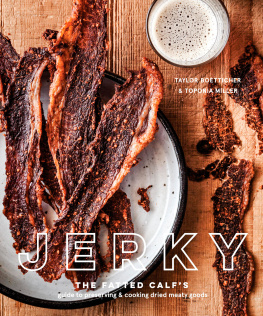








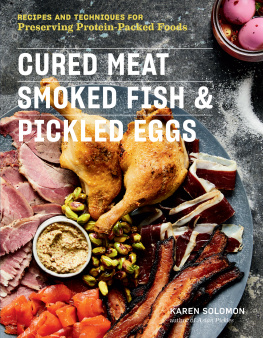
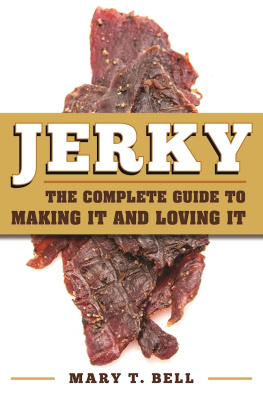
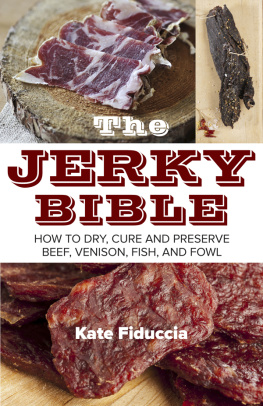

![Tammy - The ultimate dehydrator cookbook : [the complete guide to drying food, plus 398 recipes, including making jerky, fruit leather, and just-add-water meals]](/uploads/posts/book/102970/thumbs/tammy-the-ultimate-dehydrator-cookbook-the.jpg)

